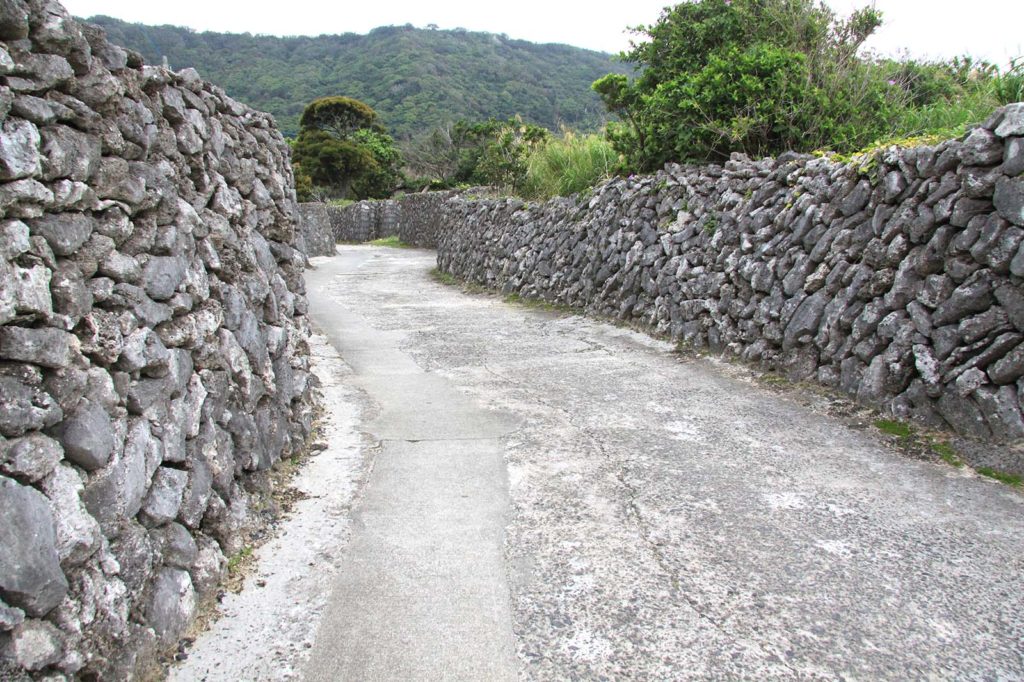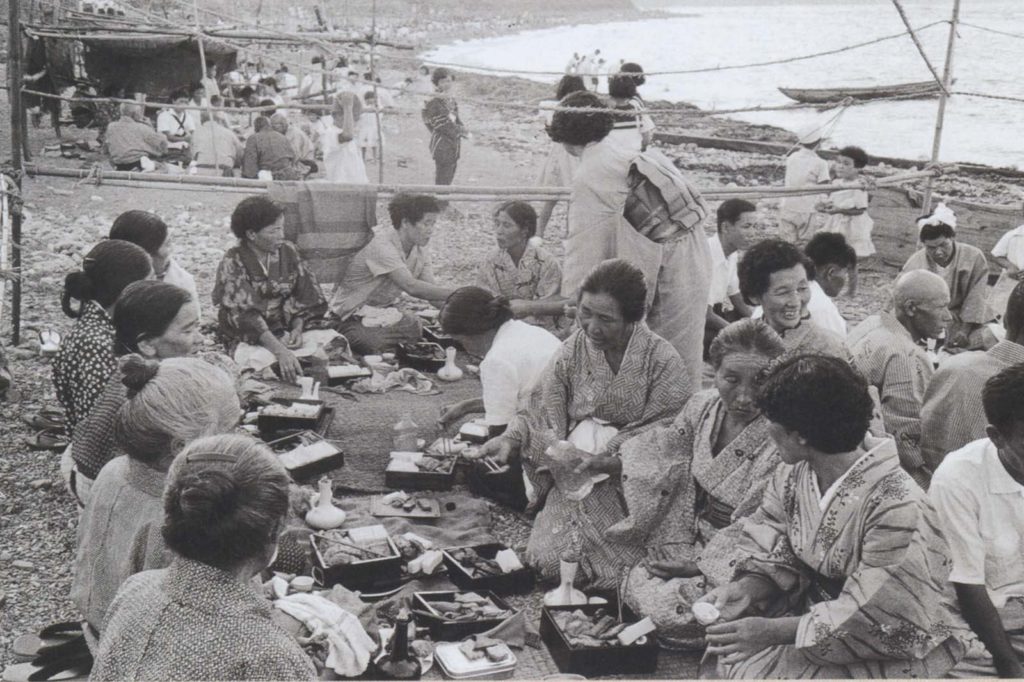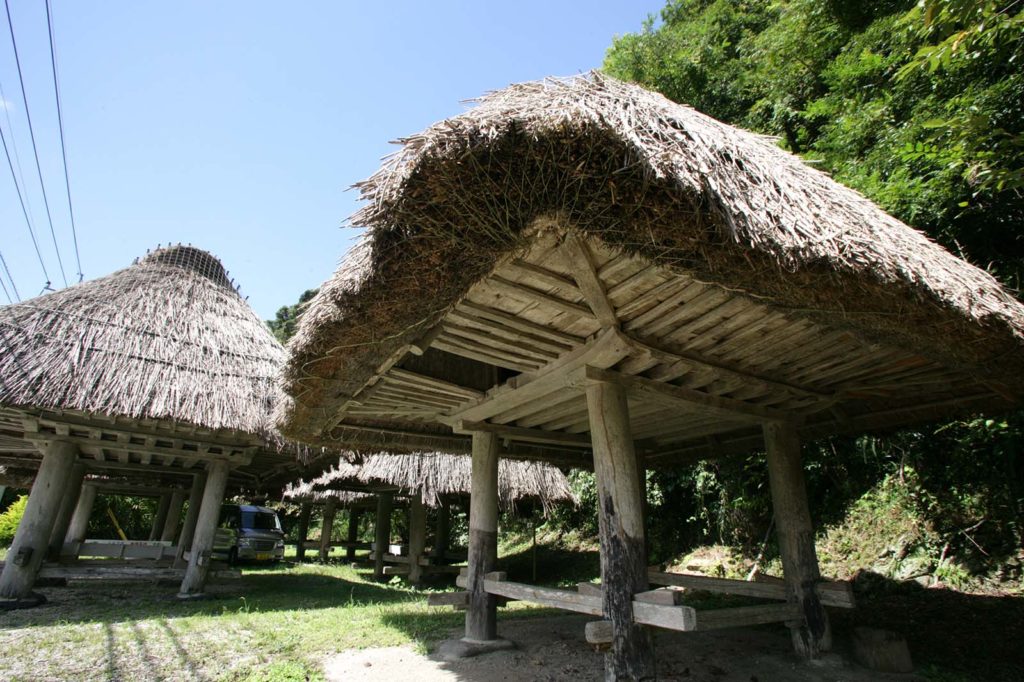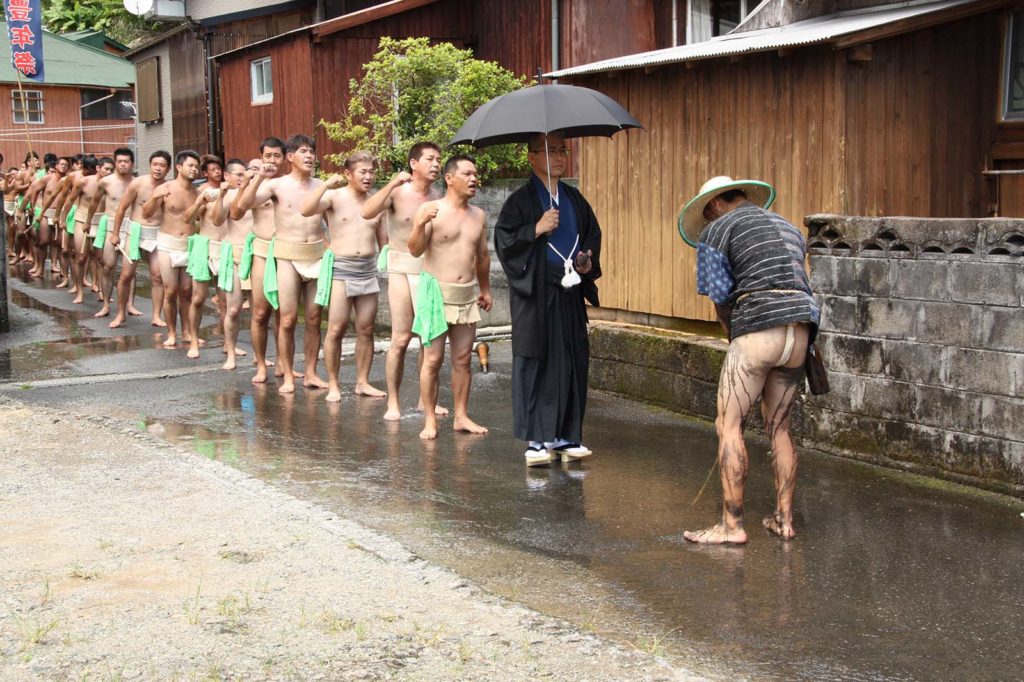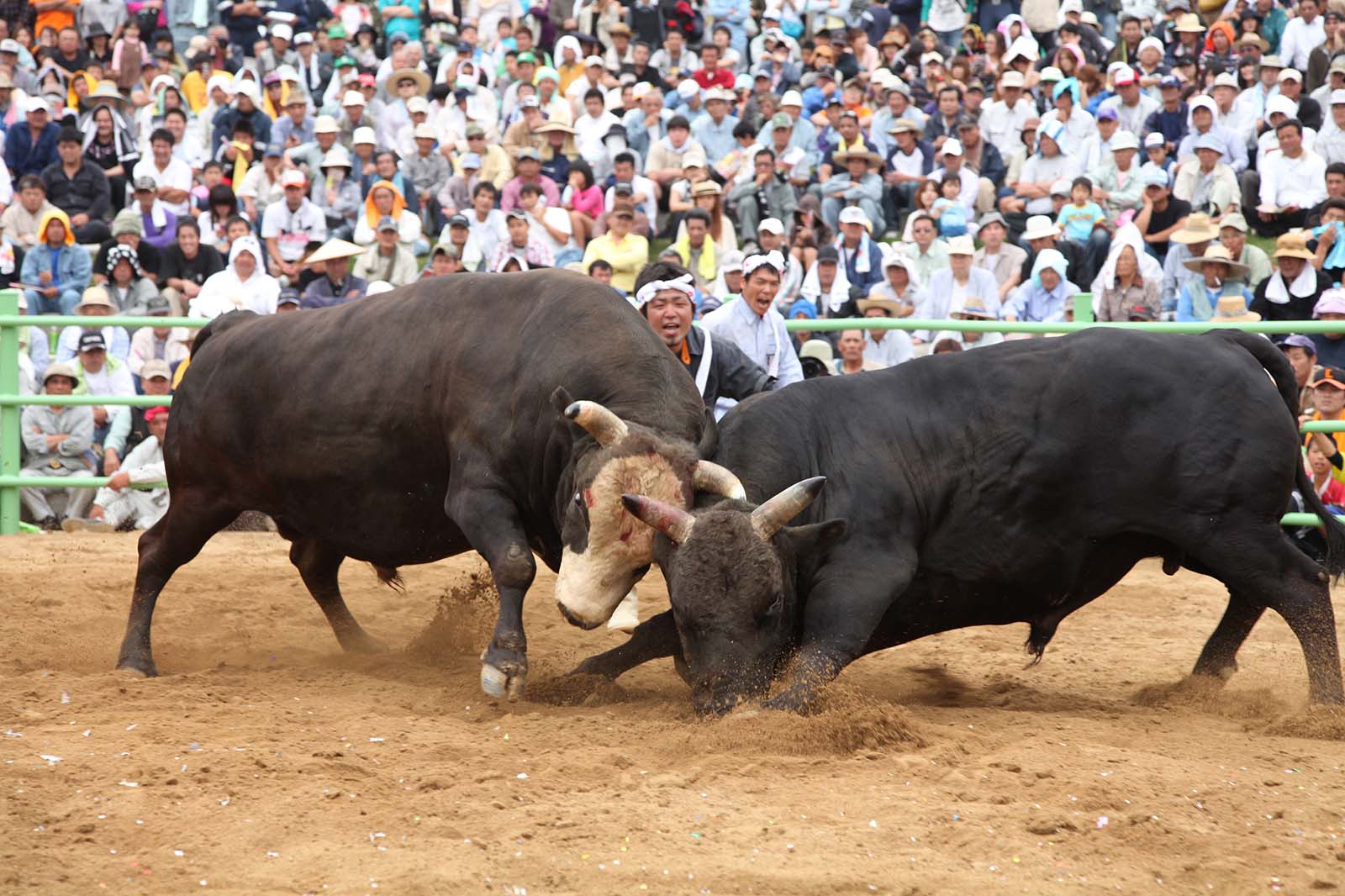
Unique Culture
Bull-Fighting Island
Amami’s fighting bulls were born as recreation during peaceful agricultural times, but now remain only in Tokunoshima in the Amami Islands. In Tokunoshima, it is said that bullfighting is called “gyu nakusami,” because that comes from the idea to “comfort with cattle.” Unlike Spanish bullfighting, in island bullfighting, two bulls are set to fight in a corner and the one that runs away loses. The bullfighting event is a scene where the Seko, the cattle lords, family members, relatives and spectators all cheer together, and when a bull wins, they play drums and horns and dance with joy.
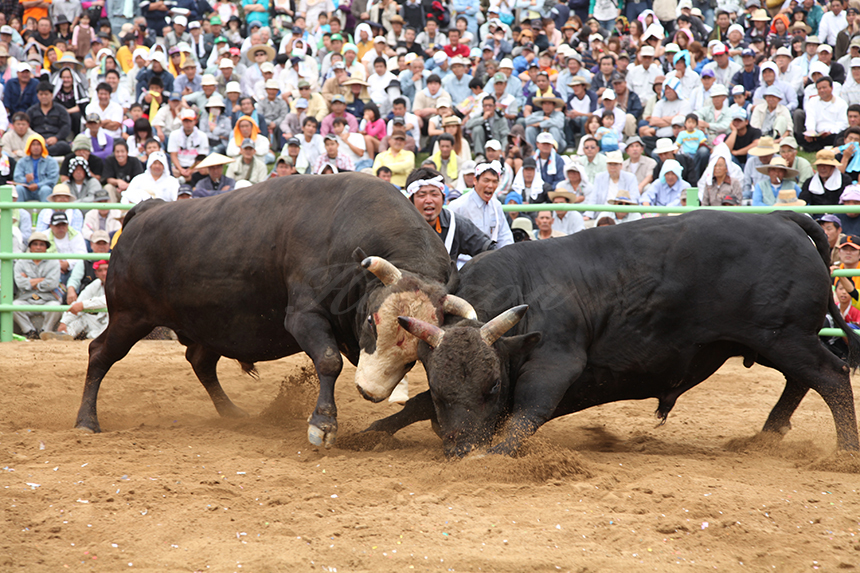
Bullfighting (Tokunoshima)
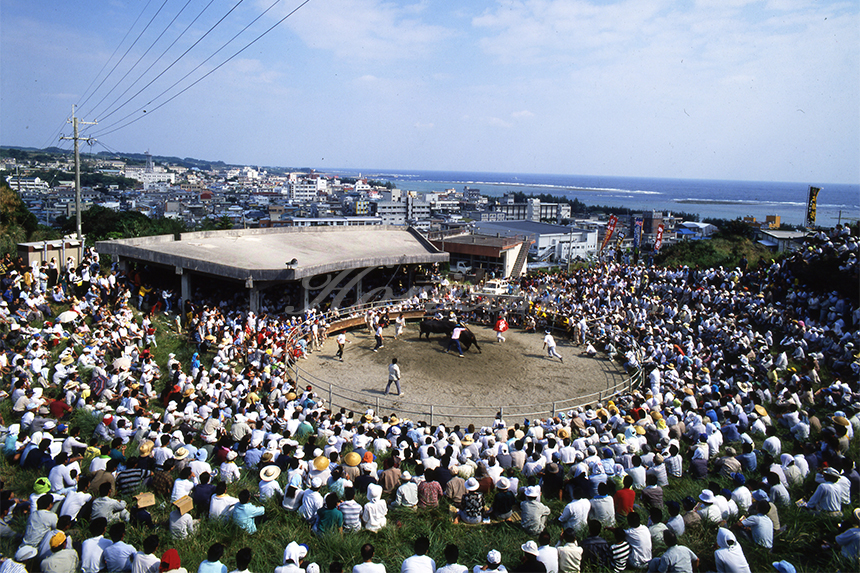
Bullfight scene (Tokunoshima)
The Waido-bushi, composed by Yutaka Tsuboyama and Tamuro Nakamura as a bullfighting folk song, is popular not only in the Amami Islands but also in the bullfighting arenas of Okinawa.

Bullfighting Dome (Tokunoshima Nakusamikan)

Boy joyous at his bull’s victory
In Tokunoshima, about 400 head of bulls, including one ton of giant cattle, are raised to compete around 20 times a year in bullfighting events on the island. The rankings include Best of Island, Middleweight, Lightweight and Mini-lightweight categories, in which about 3 title matches are held each year.
Bullfighting is a strong favorite among younger generations, and many young people dream of raising bullfighting champions.
Families that raise bullfighting cattle care for them like their own children, taking them for walks and training their leg muscles on the coast.
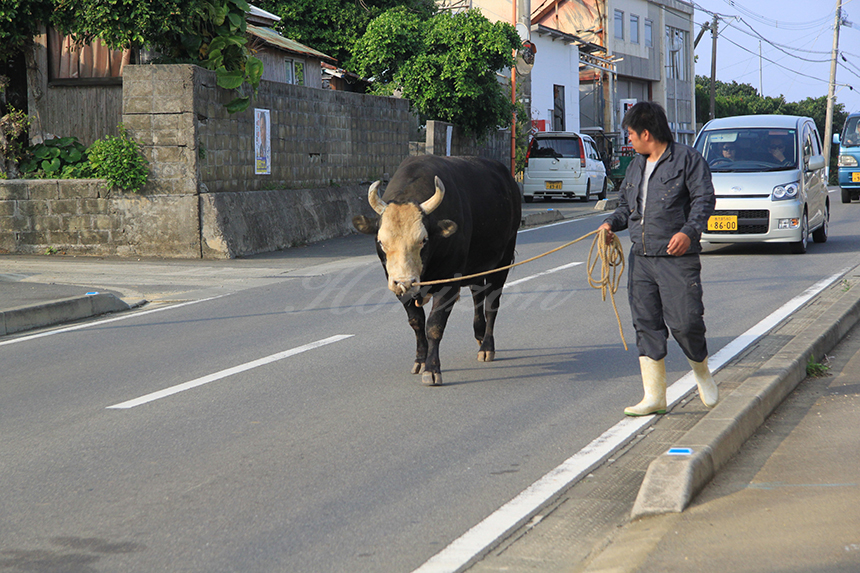
Walking a bull on the street
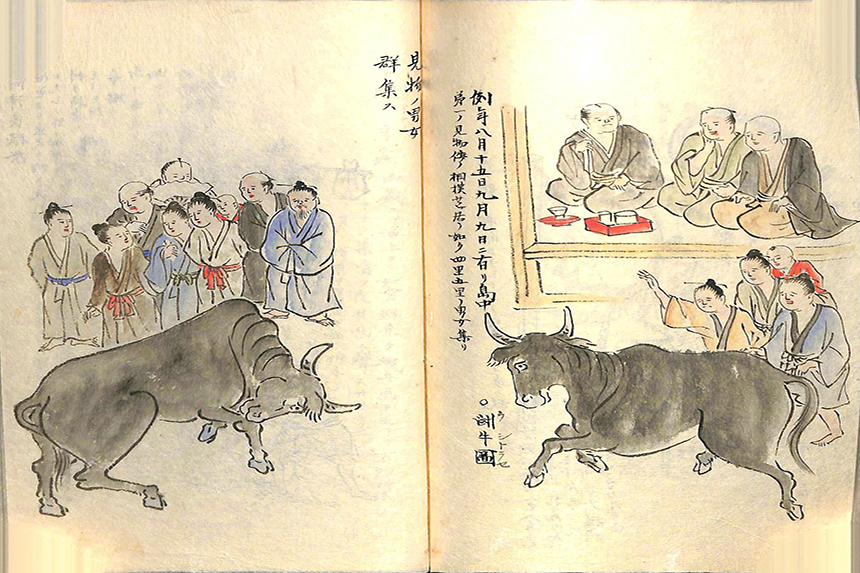
Bullfighting (ushitorase) drawing
(Nanto Zatsuwa, (Sagenta Nagoya)/ Amami City Amami Museum)
Photo and captions / HORIZON Editorial Office
